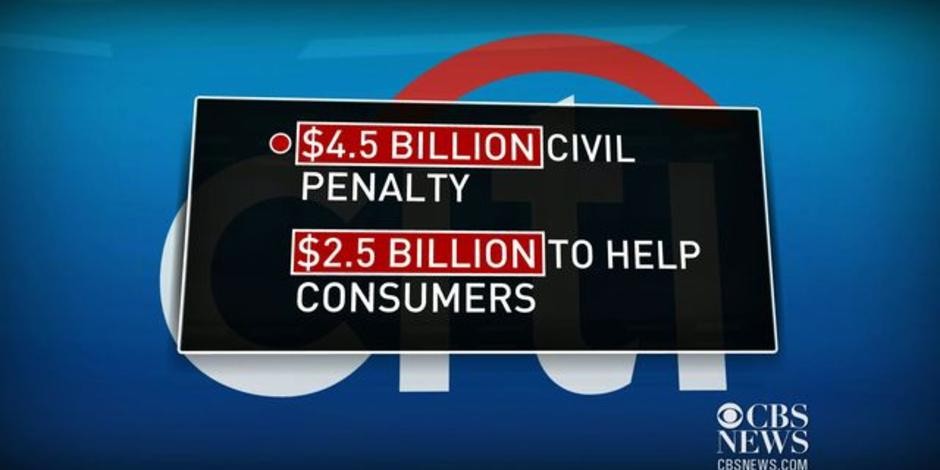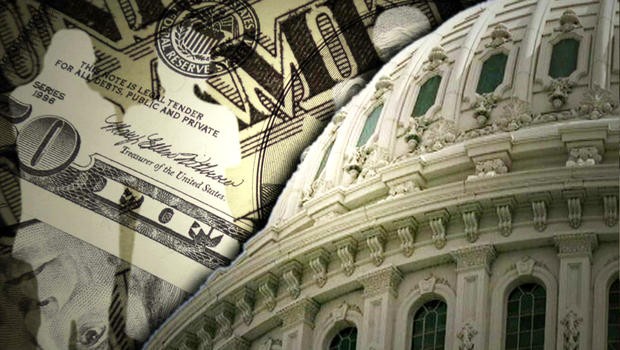Deal Reached To Ease Mortgage Crisis CBS News
Post on: 28 Июнь, 2015 No Comment

The Bush administration has hammered out an agreement with industry to freeze interest rates for certain subprime mortgages for five years in an effort to combat a soaring tide of foreclosures, congressional aides said Wednesday.
These aides, who spoke on condition of anonymity because the details have not yet been released, said the five-year moratorium represented a compromise between desires by banking regulators for a longer time frame of as much as seven years and industry arguments that the freeze should only last one to two years.
Another person familiar with the matter said the rate-freeze plan would apply to borrowers with loans made at the start of 2005 through July 30 of this year with rates that are scheduled to rise between Jan. 1, 2008, and July 31, 2010.
CBS News correspondent Anthony Mason reports that this plan is designed to help a very specific group of borrowers with adjustable rate mortgages, or ARMs. The plan is targeting people who are current — that is up-to-date — with payments on their loan, but would fall behind and risk foreclosure when the loan resets in the coming year.
Of the six and a half million subprime borrowers out there, Mason reports, estimates are about 12 percent, or 750,000, could be helped by this.
The administration said that President Bush will speak on the agreement at the White House on Thursday afternoon.
CBS News White House correspondent Mark Knoller reports that President Bush expressed caution in his news conference Tuesday about offering excessive government aid to overextended mortgage banks. He was emphatic in stating that we shouldn’t bail out lenders.
In other words, said Mr. Bush, we shouldn’t be using taxpayers’ money and say, okay, you made a lousy loan, therefore we’re going to subsidize you.
Mr. Bush knows it’s a big political issue, Knoller said, and though he’s not on any ballot next year, many Republicans are, and they want to be seen addressing the subprime mortgage crisis.
It was on August 31st that Mr. Bush first went public with his directives to his Treasury and Housing Secretaries to come up with a plan to make it easier for qualified home buyers to stay in the homes.
The Treasury Department announced that Treasury Secretary Henry Paulson and Housing and Urban Development Secretary Alphonso Jackson would hold a joint news conference Thursday afternoon with officials of the mortgage industry.
Treasury also announced that there would be a technical briefing to explain more of the details of the proposal.
Paulson, who has been leading the effort to craft a plan, said on Monday that the program would only be available for owner-occupied homes — as a way to make sure that the break is not granted to real estate speculators.
The plan emerged from talks between Paulson and other banking regulators and banks, mortgage investors and consumer groups trying to address an avalanche of foreclosures that are feared as an estimated 2 million subprime mortgages reset from lower introductory rates to higher rates.
The higher rates in many cases will boost monthly payments by as much as 30 percent, making it extremely difficult for many people to keep current with their loans.
The plan is aimed at homeowners who are making payments on time at lower introductory mortgage rates but cannot afford a higher adjusted rate.
Through October, there were about 1.8 million foreclosure filings nationwide, compared with about 1.3 million in all of 2006, according to Irvine, Calif-based RealtyTrac Inc. With home loan defaults still rising, the trend is expected to worsen next year.
The question right now, said Mike McHugh, a mortgage banker with Continental Home loans, is who is going to take the hit?
McHugh told CBS News that if investors are the ones who ulimately absorb the cost, it may discourage them from underwriting mortgages and make it harder for everyone to get loans.
This will have a repercussion and be felt for years to come, McHugh said.
The plan represents an about-face for Paulson, who until recently had insisted that the mortgage crisis could be handled on a case-by-case basis. However, he and other administration officials became convinced that the tide of foreclosures threatened by the mortgage resets represented such a severe threat that a more sweeping approach was needed along the lines of a plan put forward in October by Sheila Bair, head of the Federal Deposit Insurance Corp.
Paulson and other federal regulators began holding talks with some of the country’s biggest mortgage lenders, mortgage service companies, investors who hold mortgage-backed securities and nonprofit groups that provide counseling for at-risk homeowners.

Under the typical subprime loan, those offered to borrowers with spotty credit histories, the rates for the first two years were at levels around 7 percent to 9 percent. But after two years, those rates were scheduled to reset to levels around 9 percent to 11 percent.
For a typical $1,200 monthly mortgage payment, the reset could add another $350 to the monthly payment, greatly raising the risks of loan defaults by homeowners struggling with the current payment.
The wave of mortgage foreclosures threatened to make the most severe slump in housing even worse by dumping more foreclosed properties onto an already glutted market, further depressing home prices and shaking consumer confidence.
The deepening housing slump has already roiled financial markets, starting in August, as investors grew increasingly concerned about billions of dollars of losses being suffered by banks, hedge funds and other investors.
The administration plan is designed to deal with the crisis by allowing subprime borrowers who are living in their homes and are current on their payments to avoid a costly reset for five years. The hope is that by that time the housing downturn will have stabilized, clearing out the glut of unsold homes and halting the steep slide in prices that is occurring in many parts of the country.
With sales and prices once again rising, the expectation is that homeowners will be able to renegotiate their current adjustable rate mortgages into a more affordable fixed-rate plan.
House prices have doubled since 2000, says Jack Hough, author and Columnist for SmartMoney.com. The thing that caused it was eleven consecutive interest rate cuts by the federal reserve. The government said, ‘Let’s help people out with the tumbling tech stock prices so the economy doesn’t go into a recession.’ They cut interest rates so low that they created another bubble in house prices. Now they’re getting involved in the same game all over again.
The housing crisis has become an issue in the presidential race with Democrats Hillary Rodham Clinton and John Edwards putting forward their own proposals this week that would go further than the administration.
Mark Zandi, chief economist for Moody’s Economy.com, said while the administration plan is a good first step, eventually the government will have to go further because of the size of the problem and the threat to the economy.
This is the most serious housing downturn we have seen in the post World War II period, he said. It is a threat to the broader economy. The risks of a recession are very high.
2007 CBS Interactive Inc. All Rights Reserved. This material may not be published, broadcast, rewritten, or redistributed. The Associated Press contributed to this report.














